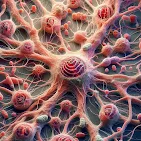While AI companions offer a tempting solution, promising companionship and understanding, they ultimately fall short of replicating the complexities of human connection. These digital entities may provide a sense of connection, but they lack the depth, empathy, and shared experiences essential for genuine human bonding (Jacobs, 2024).
The Illusion of Connection
Jacobs (2024) explains the illusion of connection:
- The allure of AI companionship is undeniable. These digital entities offer companionship, support, and a sense of connection, often tailored to individual needs.
- However, it’s crucial to recognize the limitations of this technology. AI, no matter how advanced, cannot truly understand or empathize with human emotions in the same way another person can.
By focusing on AI as a solution to loneliness, we risk neglecting the importance of genuine human interaction. Studies have shown that strong social connections are essential for both physical and mental health. Building authentic relationships takes time, effort, and vulnerability, qualities that AI simply cannot replicate.
Reconnecting with Humanity
So, how can we combat loneliness and foster deeper connections (Jacobs, 2024):
- Prioritize Real-World Connections: Make conscious efforts to spend quality time with friends and family. Join clubs or groups based on your interests.
- Cultivate Empathy: Understanding and sharing the feelings of others is a cornerstone of strong relationships.
- Challenge Negative Thought Patterns: Loneliness can often be amplified by negative self-talk. Practice self-compassion and focus on building self-esteem.
- Seek Professional Help: If loneliness is significantly impacting your life, consider seeking support from a therapist or counselor.
While technology can be a valuable tool, it shouldn't replace human connection. By understanding the limitations of AI and prioritizing real-world relationships, we can take steps to combat loneliness and build a more connected society.
In conclusion, the pursuit of technological solutions to loneliness, while understandable, may be misguided. True fulfillment comes from nurturing genuine human connections. By prioritizing real-world interactions and cultivating empathy, we can begin to heal the wounds of isolation and create a more connected and compassionate society.
References
- Jacobs, Kerrin. (2024). Digital loneliness—changes of social recognition through AI companions. Frontiers in Digital Health. 6. 10.3389/fdgth.2024.1281037.


























